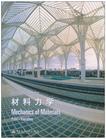材料力学
出版时间:2004-8 出版社:建筑工业 作者:(英)皮特尔 页数:545
前言
This textbook is intended for use in a first course in mechanics of materials.Programs of instruction relating to the mechanical sciences, such as me-chanical, civil, and aerospace engineering, often require that students takethis course in the second or third year of studies. Because of the fundamentalnature of the subject matter, mechanics of materials is often a requiredcourse, or an acceptable technical elective in many other curricula. Studentsmust have completed courses in statics of rigid bodies and mathematicsthrough integral calculus as prerequisites to the study of mechanics ofmaterials. To place this book in context for engineering education, the user shouldknow that it is an extensive revision of the fourth edition of Strength ofMaterials by Pytel and Singer. The contents have been thoroughly modern-ized to reflect the realities and trends in contemporary engineering educa-tion. In addition to eliminating a few of the specialized topics normallytaught in more advanced civil engineering courses, the coverage of funda-mental topics has been expanded. All of the illustrations have been redrawnand improved, with the addition of a second color for clarity and as an aidto understanding complex structures. Many new diagrams aid the visualiza-tion of concepts and improve the comprehension of derivations. Fully 60%of the homework problems are new or modified versions of previous prob-lems. A new feature is the computer problems found at the end of eachchapter. Every effort has been made to maintain the conciseness and organiza-tion that were the hallmarks of the earlier editions of Pytel and Singer. In thefirst eight chapters, emphasis is placed exclusively on elastic analysis throughthe presentation of stress, strain, torsion, bending, and combined loading.An instructor can easily teach these topics within the time constraints of atwo- or three-credit course. The remaining five chapters of the text covermaterial that can be omitted from an introductory course. Because thesemore advanced topics are not interwoven in the early chapters on the basictheory, the core material can efficiently be taught without skipping overtopics within chapters. Once the instructor has covered the material on elas-tic analysis, he or she can freely choose topics from the more advanced laterchapters, as time permits. Organizing the material in this manner has createda significant savings in the number of pages without sacrificing topics thatare usually found in an introductory text.
内容概要
This textbook is intended for use in a first course in mechanics of materials. Programs of instruction relating to the mechanical sciences, such as mechanical, civil, and aerospace engineering, often require that students take this course in the second or third year of studies. Because of the fundamental nature of the subject matter, mechanics of materials is often a required course, or an acceptable technical elective in many other curricula. Students must have completed courses in statics of rigid bodies and mathematics through integral calculus as prerequisites to the study of mechanics of materials.
书籍目录
CHAPTER 1 StressCHAPTER 2 StrainCHAPTER 3 TorsionCHAPTER 4 Shear and Moment in BeamsCHAPTER 5 Stresses in BeamsCHAPTER 6 Deflection of BeamsCHAPTER 8 Stresses Due to Combined LoadsCHAPTER 9 Composite BeamsCHAPTER 10 ColumnsCHAPTER 11 Additional Beam TopicsCHAPTER 12 Special TopicsCHAPTER 13 Inelastic Action
章节摘录
If two bodies are pressed against each other, compressive forces are devel-oped on the area of contact. The pressure caused by these surface loads iscalled bearing stress. Examples of bearing stress are the soil pressure beneatha pier and the contact pressure between a rivet and the side of its hole. If thebearing stress is large enough, it can locally crush the material, which in turncan lead to more serious problems. In order to reduce bearing stresses, en-gineers sometimes employ bearing plates, the purpose of which is to distributethe contact forces over a larger area. As an illustration of bearing stress, consider the lap joint formed by thetwo plates that are riveted together as shownin Fig. 1.12(a). The bearingstress caused by the rivet is not constant; it actually varies from zero at thesides of the hole to a maximum behind the rivet as illustrated in Fig. 1.12(b).The difficulty inherent in such a complicated stress distribution is avoided bythe common practice of assuming that the bearing stress ab is uniformlydistributed over a reduced area. ……
图书封面
评论、评分、阅读与下载
